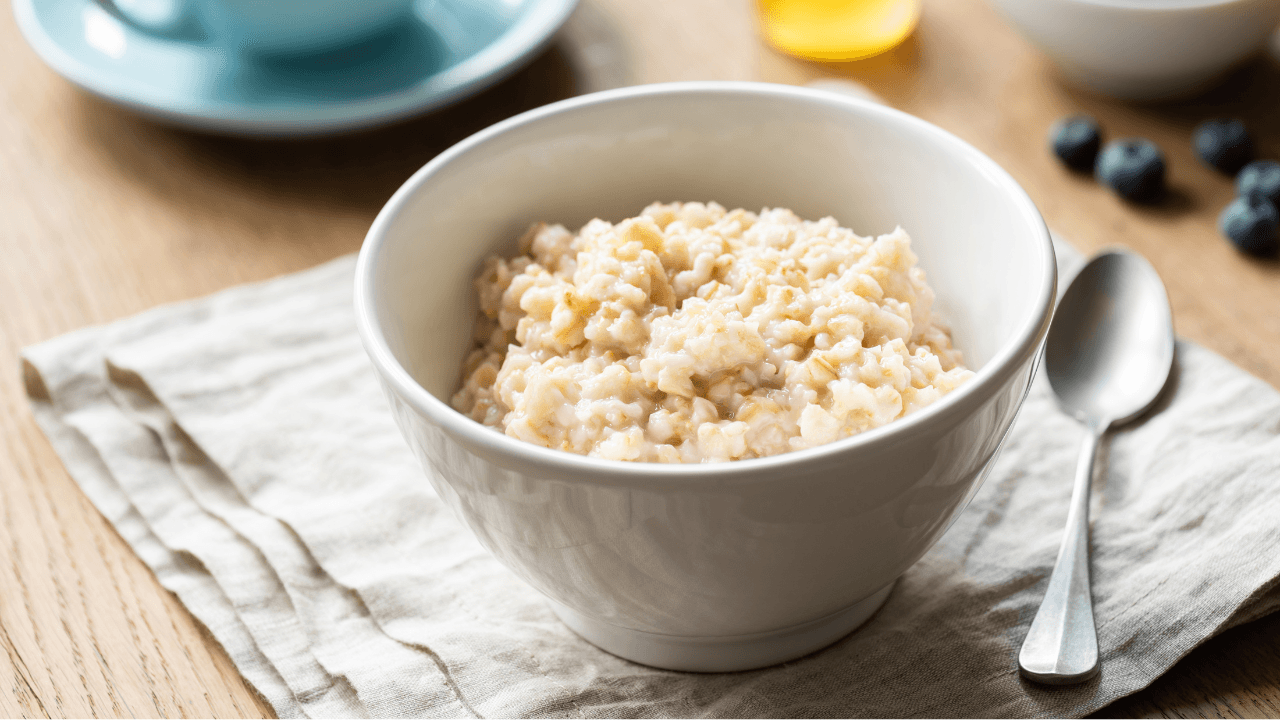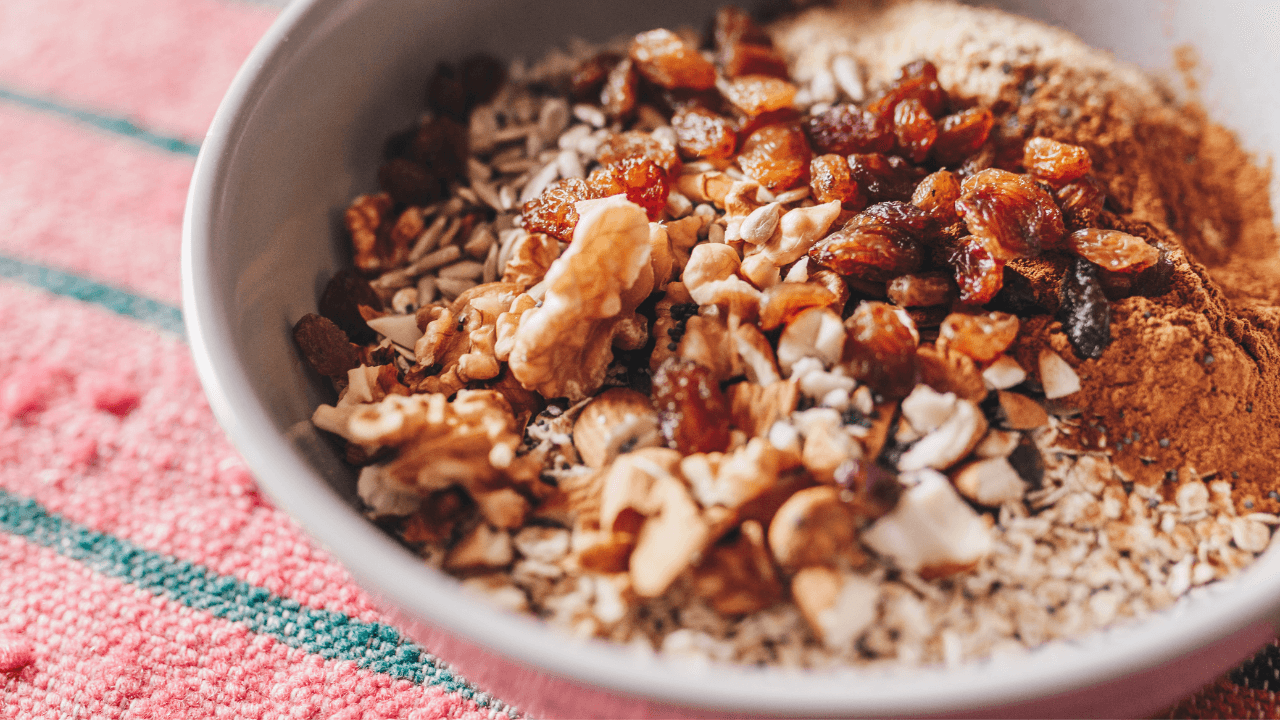Oatmeal is often seen as a healthy breakfast, but it may be causing blood sugar spikes. Discover the glycemic impact of different oat types and how to balance your meal for stable energy.
Heald Membership: Your Path to Diabetes Reversal
Table of content
Oatmeal isn't bad for blood sugar—it depends on the type and how you prepare it. Steel-cut oats with protein and healthy fats offer the most stable energy.
Introduction
Oatmeal has long been hailed as a heart-healthy breakfast choice, packed with fiber, vitamins, and minerals. It’s a staple for many who want to maintain a balanced diet.
But did you know that for some individuals, oatmeal might actually be causing blood sugar spikes followed by energy crashes? If you’ve ever felt an unexpected drop in energy, irritability, or hunger just a couple of hours after eating oatmeal, you may be experiencing reactive hypoglycemia, a rapid blood sugar drop following an initial spike.
Let’s uncover the science behind oatmeal and blood sugar levels, and explore how to enjoy this breakfast favorite while maintaining steady energy.

The Science Behind Oatmeal and Blood Sugar Spikes
Oatmeal contains carbohydrates, which are the body’s primary source of energy. However, not all carbohydrates affect the body in the same way. The glycemic index (GI) measures how quickly a food raises blood sugar levels. Foods with a high GI can cause rapid blood sugar spikes, while those with a low GI lead to gradual increases.
There are different types of oatmeal, each with a different impact on blood sugar:
Steel-cut oats – Lowest glycemic index (42-53), slow digestion, gradual glucose release.
Rolled oats – Moderate glycemic index (56-69), more processed, faster glucose release.
Instant oats – High glycemic index (79-83), highly processed, rapid glucose release.
While steel-cut oats and rolled oats have a lower GI, instant oats can lead to blood sugar spikes, making them a less ideal choice for those managing blood glucose levels.
Does Oatmeal Spike Blood Sugar? What the Research Reveals
A study published in the American Journal of Clinical Nutrition found that instant oats led to significantly higher blood glucose levels compared to steel-cut oats. The rapid digestion of processed oats results in an insulin spike, which can subsequently lead to a blood sugar crash. This cycle of high and low blood sugar can leave individuals feeling fatigued and irritable, increasing the likelihood of cravings and overeating.
Another study in the Journal of Nutrition and Metabolism highlighted that the blood sugar response to oatmeal varies among individuals. People with insulin resistance or diabetes may experience a sharper glucose spike even with lower- GI oatmeal, making portion control and added ingredients crucial in mitigating these effects.
Evaluating Oatmeal: Is It Good or Bad for Blood Sugar?
Oatmeal is not inherently bad for blood sugar but it depends on how you prepare it. Here’s a breakdown:
Pros of Oatmeal:
Rich in beta-glucan fiber, which supports heart health and digestion.
Can promote satiety and help with weight management.
Contains essential nutrients like magnesium and iron.
Cons of Oatmeal:
Can cause blood sugar spikes, especially instant varieties.
Often consumed with added sugars (honey, maple syrup, flavored packets) that exacerbate glucose spikes.
May lead to energy crashes if not paired with protein or healthy fats.
Practical Strategies to Manage Oatmeal-Induced Blood Sugar Fluctuations
If you love oatmeal but want to avoid its potential downsides, consider these strategies:
Choose the Right Oats – Opt for steel-cut or rolled oats instead of instant oats to slow glucose release.
Add Protein & Healthy Fats – Incorporate nuts, seeds, or Greek yogurt to balance the meal and slow digestion.
Avoid Added Sugars – Sweeten naturally with cinnamon or berries instead of honey, syrup, or sugar.
Mind Your Portions – Stick to a serving size of ½ cup (dry) to prevent excessive carbohydrate intake.
Pair with Fiber-Rich Foods – Add chia seeds, flaxseeds, or vegetables to enhance fiber content and stabilize blood sugar levels.

Conclusion: Rethinking Your Breakfast for Steady Energy
While oatmeal can be a nutritious breakfast, it’s not always the best choice for blood sugar stability. If you’re experiencing energy crashes or sugar spikes after eating oatmeal, consider modifying your preparation method or exploring alternative breakfast options. A balanced approach combining oats with protein, fiber, and healthy fats that can help maintain steady energy levels throughout the day. The key is personalization: listen to your body and make adjustments to support your overall health and well-being.
What’s your experience with oatmeal? Have you noticed any changes in energy levels? Let us know in the comments!
Frequently Asked Questions (FAQs)
Does oatmeal always cause blood sugar spikes?
Not necessarily. The impact of oatmeal on blood sugar depends on the type of oats and how you prepare them. Steel-cut and rolled oats digest slowly, causing gradual glucose release, while instant oats are processed and can spike blood sugar. Understand which foods work best for your body and learn strategies to balance oatmeal with protein and healthy fats for steady energy.
Are all oatmeal varieties safe for people with diabetes or insulin resistance?
Some varieties, like steel-cut oats, are generally safer because they have a lower glycemic index. Instant oats and flavored packets with added sugars can lead to spikes. Get the right portion sizes and combinations to minimize blood sugar fluctuations.
How can I enjoy oatmeal without spiking my blood sugar?
Simple adjustments make a big difference: choose low-GI oats, add protein (nuts, seeds, Greek yogurt), avoid added sugars, and monitor portions. You can also rely on Heald for practical meal planning tips and personalized strategies to enjoy your favorite breakfast without compromising glucose control.
Why do I feel fatigued or hungry shortly after eating oatmeal?
This may be due to rapid blood sugar spikes followed by crashes, especially from instant oats or sweetened oatmeal. Identify trigger foods and learn how to pair carbs with protein, fiber, and fats to maintain balanced energy throughout the morning.
Is oatmeal still healthy if I have prediabetes?
Yes, if prepared thoughtfully. Oats provide soluble fiber, vitamins, and minerals that support heart and digestive health. Incorporate oatmeal in a way that supports blood sugar control, blending it safely into a prediabetes-friendly diet.
Can adding toppings like fruit or honey affect blood sugar?
Yes. Even natural sweeteners like honey and some fruits can become high-sugar toppings that can increase glycemic response. You can try healthier alternatives instead like cinnamon, berries, or chia seeds to sweeten your oatmeal while keeping glucose levels stable.
How much oatmeal is safe to eat in one serving?
Portion control is important. A typical serving is ½ cup (dry oats), which provides sufficient fiber without excess carbohydrates. Determine personalized serving sizes based on your blood sugar patterns and lifestyle.
Should I avoid oatmeal entirely if I notice sugar spikes?
Not necessarily. The solution is to adjust the type of oats, pair them with protein and fat, and manage portions. If you need help, Heald’s programs provide personalized guidance to help you still enjoy oatmeal safely while protecting your blood sugar.
Are there better breakfast alternatives than oatmeal for stable blood sugar?
Yes, options like eggs, Greek yogurt, avocado toast on whole-grain bread, or chia seed pudding can offer slower glucose release. Explore alternative breakfast choices tailored to your preferences and metabolic needs, so you never feel restricted.
How can Heald help me manage blood sugar beyond oatmeal?
Heald offers doctor-led, holistic plans focused on diet, activity, sleep, stress, and medication management. Whether it’s adjusting breakfast choices, planning meals, or understanding your glucose response, Heald provides personalized strategies to reduce spikes, improve energy, and support long-term blood sugar stability.

Popular Blogs
Comments









